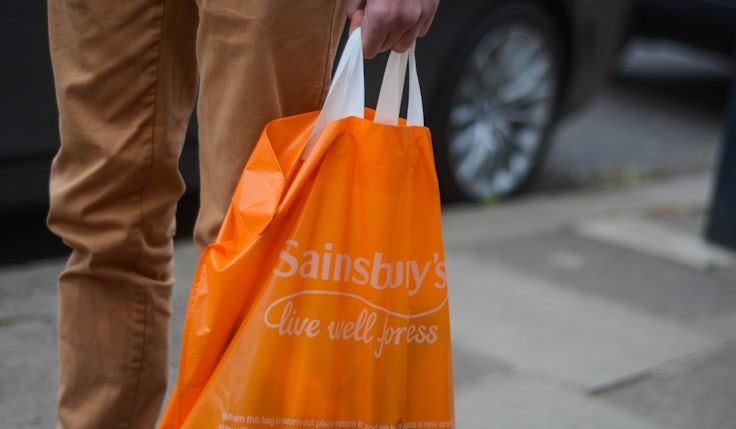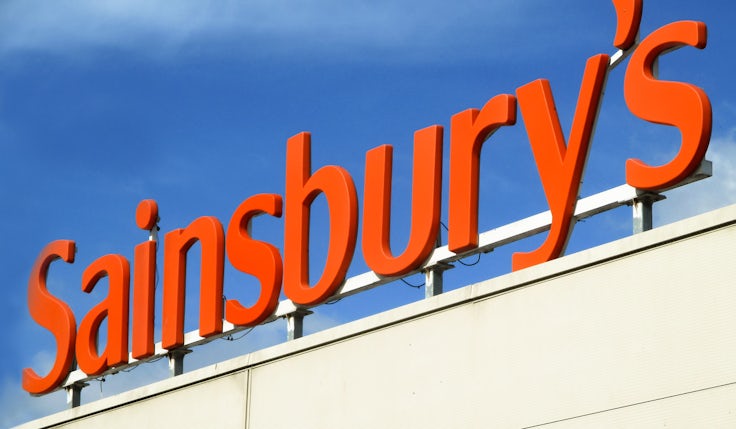Sainsbury’s ramps up value play with ‘bold new wave’ of Aldi price matches
Offering low prices is a “key priority” for the supermarket, which is pledging to match discounter prices across more ranges despite surging festive sales of premium products.
 Supermarket group Sainsbury’s plans to maintain its focus on value, and matching the prices of discounter rivals, throughout 2022.
Supermarket group Sainsbury’s plans to maintain its focus on value, and matching the prices of discounter rivals, throughout 2022.
Announcing its third quarter results this morning, the retailer said investments in improved value for customers, product innovation and service levels have driven gains in market share and sales volumes.
The group upgraded its profit forecast for the full year to £720m after strong Christmas trading. Compared to pre-pandemic levels in 2019, the figures show grocery sales rose by 6.6% in the third quarter, with the six weeks to Christmas registering a 6.8% increase. Clothing sales rose by 38% compared to 2019 levels, as the retailer reduced markdowns and promotions.
“It was a Christmas like no other, that came later than ever,” said chief executive Simon Roberts, speaking on a results call today (12 January).
Roberts credited the supermarket’s “bold” plan for helping Sainsbury’s deliver its best value food over the 2021 festive period, including its lowest priced Christmas dinner and biggest New Year to date.
The CEO described this as a festive period where customers traded up, as more of them spent Christmas and New Year at home. The premium Taste the Difference range was the retailer’s biggest-growing product tier over Christmas, with sales up 13% on 2019. Sainsbury’s also saw record sales of Champagne and sparkling wines.
Value is a huge focus and we continue to improve our value position against competitors.
Simon Roberts, Sainsbury’s
The retailer remains committed to highlighting lower prices in its marketing strategy. Claiming to have become “more competitive on price”, Sainsbury’s is planning a “bold new wave” of price matches to rival Aldi, focused on 150 high volume, fresh products customers buy most often. This is in addition to putting more than 2,000 lines into its Price Lock promise.
Sainsbury’s claims its value index improved against all key competitors during the third quarter, improving 670 basis points against Aldi year on year. Furthermore, customer satisfaction in terms of value for money spent rose four percentage points year on year.
“Just over a year ago we set out our plan to put food back at the heart of Sainsbury’s and to lower prices, launch new products and improve our service. We have remained absolutely focused on this,” said Roberts.
“Value is a huge focus and we continue to improve our value position against competitors. Our ‘Sainsbury’s Quality Aldi Price Match Christmas Dinner’ campaign was really successful and offered low prices, and offering low prices will remain our key priority throughout 2022. Especially as we know it will be a tough year for household budgets.”
Building on the launch of its ‘My Nectar Prices’ push in September, Sainsbury’s is hoping to drive digital registrations to its loyalty scheme. There are currently 8.7 million digital Nectar customers, with the retailer delivering 95 million My Nectar Prices personalised discounts each week.
Tripling innovation
Sainsbury’s launched more than 600 new products during the third quarter, of which 300 were new Christmas products, part of its plan to triple levels of product innovation. Of these new products, 100 were premium Taste the Difference products.
The retailer has also seen its on-demand grocery offer grow, which now operates from approximately 580 stores through Chop Chop, Deliveroo and Uber Eats.
While the Omicon variant of Covid-19 is still impacting behaviour there has been a gradual return of customers to physical stores Roberts added, although online sales are running at double their pre-pandemic level. Over the Christmas week alone ecommerce sales surged by 41%.
“We’ve seen a further normalisation of customers coming back to stores. As we came into this Christmas our big supermarkets saw more customers coming,” he explained.
“Online volumes were clearly still very strong. We were up 92% online in sales terms compared to before – but more customers came back into stores.”
In terms of the wider group, the retailer closed 27 standalone Argos stores in the quarter, bringing the total to 338, while also opening 25 Argos outlets in Sainsbury’s supermarkets, bringing the tally of in-store locations to 398. Ecommerce is proving crucial for Argos, which saw 77% of sales originate online during the period.







Comments